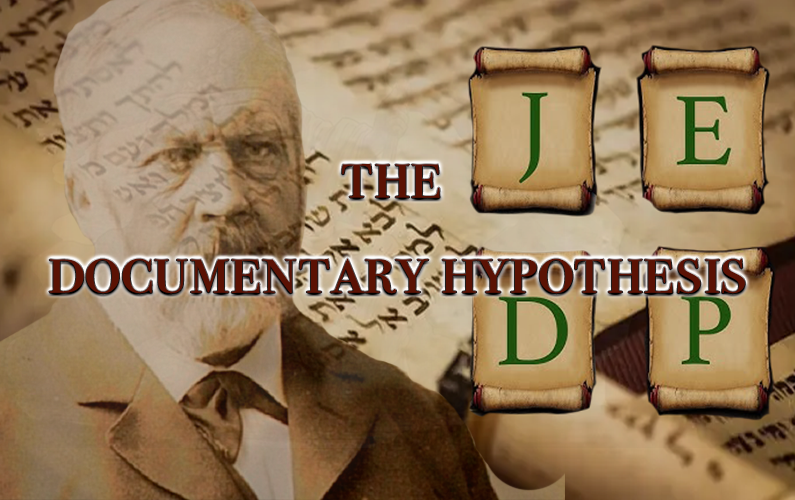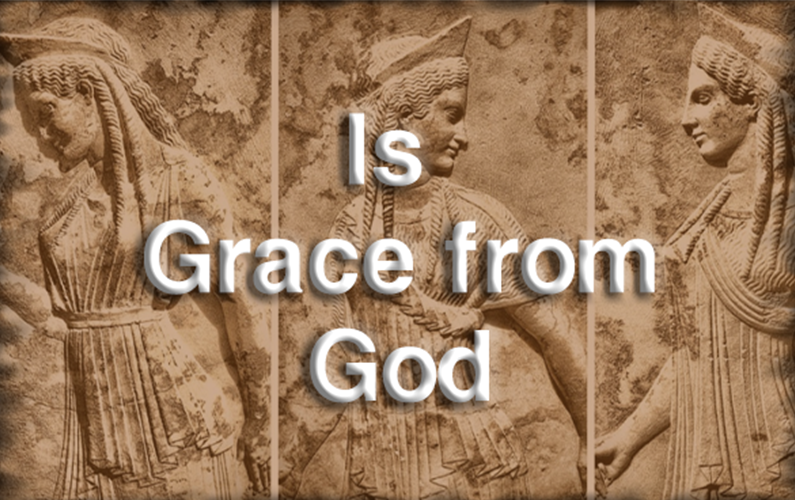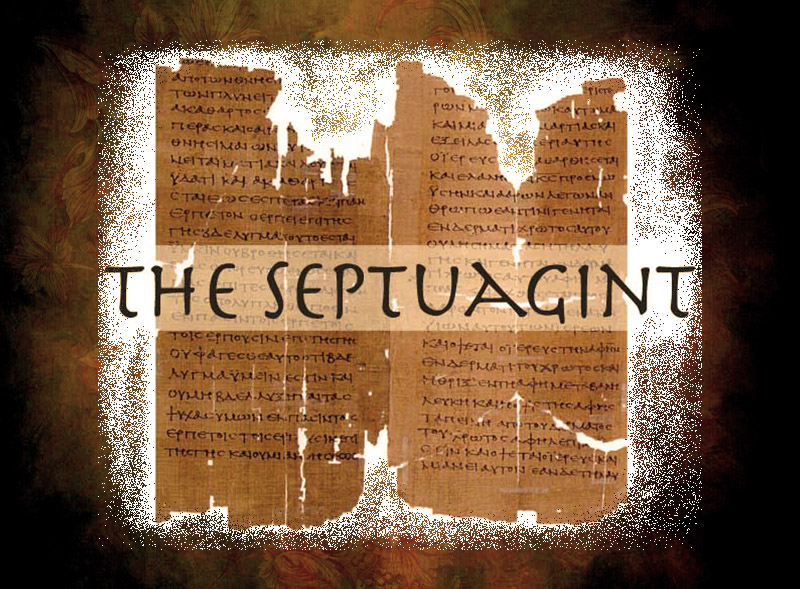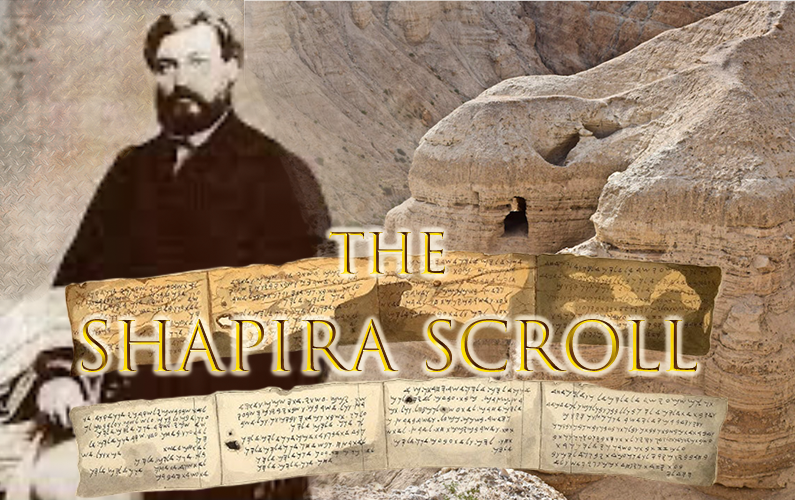
The Shapira Scroll
The Shapira Scroll
The Shapira Scroll, also known as the Shapira Strips or Shapira Manuscript, was a set of leather strips inscribed in Paleo-Hebrew script. It was presented by Moses Wilhelm Shapira in 1883 as an ancient Bible-related artifact and almost immediately denounced by scholars as a forgery.
The scroll consisted of fifteen leather strips, which Shapira claimed had been found in Wadi Mujib (biblical Arnon) near the Dead Sea. The Hebrew text hinted at a different version of Deuteronomy, including the addition of a new line to the Ten Commandments: “You shall not hate your brother in your heart: I am God, your god.” The text also lacks all laws except for the ten commandments, which it renders consistently in the first-person, from the standpoint of the deity. Scholars took little time to reject it as a fake, and the shame brought about by the accusation of forgery drove Shapira to suicide in 1884.
Shapira’s widow had at least part of the scroll in 1884, which she sent to Konstantin Schlottmann. The scroll reappeared a couple of years later in a Sotheby’s auction, where it was sold for £10 5s to Bernard Quaritch, who later listed it for £25. Contemporary reports show Dr. Philip Brookes Mason displayed the “whole of” the scroll at a public lecture in Burton-on-Trent on March 8, 1889. The current whereabouts of the scroll, if it survives, are unknown.
Source :
https://en.wikipedia.org/wiki/Shapira_Scroll
Moses Wilhelm Shapira’s infamous Deuteronomy fragments – long believed to be forgeries – are authentic ancient manuscripts, and they are of far greater significance than ever imagined. The literary work that these manuscripts preserve – which Idan Dershowitz calls “The Valediction of Moses” or “V” – is not based on the book of Deuteronomy. On the contrary, V is a much earlier version of Deuteronomy. In other words, V is a proto-biblical book, the likes of which has never before been seen. This conclusion is supported by a series of philological analyses, as well as previously unknown archival documents, which undermine the consensus on these manuscripts. An excursus co-authored with Na’ama Pat-El assesses V’s linguistic profile, finding it to be consistent with Iron Age epigraphic Hebrew. V contains early versions of passages whose biblical counterparts reflect substantial post-Priestly updating. Moreover, unlike the canonical narratives of Deuteronomy, this ancient work shows no signs of influence from the Deuteronomic law code. Indeed, V preserves an earlier, and dramatically different, literary structure for the entire work – one that lacks the Deuteronomic law code altogether. These findings have significant consequences for the composition history of the Bible, historical linguistics, the history of religion, paleography, archaeology, and more.
There has been much debate regarding the authenticity of the Shapira scrolls and this debate continues to this day.
The problem is that the original rejection of the scrolls was based on an investigation using insight and methodologies of the late 19th century and coupled with this, the tarnished reputation of Moses Shapira at the time, influenced the decision.
In this present time the methods/technology used to analyse ancient texts, as well as the insight gleaned over centuries, has led to a different view of these scrolls. Clearly there is still much debate regarding the authenticity of the scrolls but there are some very well respected academics who have come around to suggesting that the scrolls could very well be authentic.
From my own analysis of the more recent findings and conclusions I believe that these scrolls are part of the original message given to Moses.
I say this because of my understanding and acceptance of theories such as ‘The Documentart Hypothesis‘ and ‘Interpolations‘, which are clear and obvious in the Bible when one has been schooled in the methtod of identification.
When one considers this and the statements in Scripture relating to the unwanted (by the Almighty) Temple, sacrifices and monarchy (i.e. kings), then it becomes clearer to the reader that the Torah as we know it today has been tampered with – refer to Jeremiah:
How do ye say, We are wise, and the law of the LORD is with us? Lo, certainly in vain made he it; the pen of the scribes is in vain. 8 “How can you say, ‘We are wise, and the law of the LORD is with us’? But behold, the lying pen of the scribes has made it into a lie.
Jeremiah 8:8
One must also consider the words of our Messiah Yahushua when he time and time again rebuked the priesthood for their ‘leaven’ and being of the devil:
Ye are of your father the devil, and the lusts of your father ye will do. He was a murderer from the beginning, and abode not in the truth, because there is no truth in him. When he speaketh a lie, he speaketh of his own: for he is a liar, and the father of it.
John 8:44
I could go on but my purpose is not to convince you here but rather to provide you with a starting point for your own research and conclusion on the matter.
The Shapira Scrolls — Authentic or Forged?
Scholars debate the scrolls’ authenticity in Biblical Archaeology Review
Do the Shapira Scrolls contain an authentic biblical manuscript or forged text?
These scroll fragments surfaced at the end of the 19th century to much fanfare. In 1883, antiquities dealer Moses Shapira presented to the watching world several scroll fragments that he claimed were an ancient biblical manuscript, an early version of the Book of Deuteronomy. If authentic, this would be a proto-biblical text.
The discovery seemed too good to be true, and many leading scholars of the day said just that: They cried forgery and said that the scrolls did not contain an ancient text. Disgraced and discredited, Shapira and his scrolls went down in infamy.
Does this 19th-century verdict still stand today, or should it be overturned?
Earlier this year, biblical scholar Idan Dershowitz of the University of Potsdam gained international attention as he argued that the Shapira Scrolls do, in fact, preserve a genuine proto-biblical text, which he calls The Valediction of Moses. In his book The Valediction of Moses: A Proto-Biblical Book, he reassessed the Shapira Scrolls with the tools of modern biblical scholarship. Although he made a strong case, many scholars remained unconvinced. Two vocal dissenters were biblical scholars Ronald Hendel of the University of California, Berkeley, and Matthieu Richelle of the Université Catholique de Louvain, in Belgium. They believe the verdict of forgery still stands.
Watch this debate unfold in the Winter 2021 issue of Biblical Archaeology Review. On one side, Dershowitz and archaeologist James Tabor of the University of North Carolina at Charlotte defend the scrolls’ authenticity in their article “The Shapira Scrolls: The Case for Authenticity.” On the other side, Hendel and Richelle contend that the scrolls are 19th-century forgeries in “The Shapira Scrolls: The Case for Forgery.”
Both articles analyze the scrolls’ discovery, script, and content.
The Scrolls’ Discovery
The Shapira Scrolls were not found in an archaeological excavation—but rather appeared on the antiquities market in the late 1870s. Reportedly, Bedouin had discovered the 16 scroll fragments in a cave east of the Dead Sea, in biblical Moab in what is today Jordan. The fragments looked like dark lumps of leather with Paleo-Hebrew writing. Moses Shapira bought the fragments from the Bedouin. After analyzing them, he presented his findings and initial translation to the public in 1883.
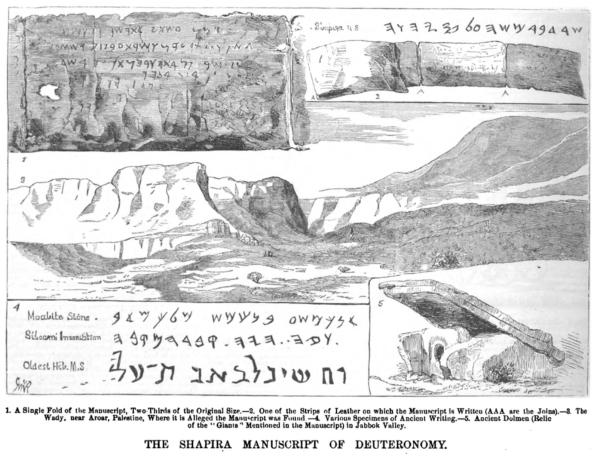
This origin story of the scrolls caused many scholars—both in the 19th century and today—to approach the scrolls with skepticism. Artifacts that don’t come from controlled excavations (often called unprovenanced artifacts) are divorced from their greater context. Much information that could have been gathered about these artifacts is lost. Further, there is always the possibility that such artifacts are not genuine but, rather, fabricated for monetary or personal gain.
In their analysis, Hendel and Richelle point out that Shapira had peddled forgeries before. Whether intentionally or not, Shapira had sold artifacts, which later had been exposed as fakes, to collectors and institutions. Thus, the scrolls and their origin story deserve careful scrutiny.
Archaeologist James Tabor also digs into the scrolls’ origin story. He notes the strong similarities with the discovery of the Dead Sea Scrolls. Heralded by many as the most important archaeological discovery of the 20th century, the Dead Sea Scrolls were initially found by Bedouin in caves west of the Dead Sea in the 1940s and 1950s, about a century after the Shapira Scrolls had surfaced. Subsequent excavation exposed more scrolls in these caves, and decades of analysis have proven the Dead Sea Scrolls to be authentic. Thus, Tabor posits that the origin story of the Shapira Scrolls should not immediately discredit their validity.
The Scrolls’ Script
Scholars should also assess the scrolls’ script and content. Unfortunately, the Shapira Scrolls themselves have vanished, so they cannot undergo scientific tests, which might provide a conclusive answer on validity. For their analysis, then, scholars must rely on 19th-century photographs, script charts, notes, and drawings of the scrolls.
If authentic, the script of the Shapira Scrolls should resemble that of ancient Hebrew inscriptions. There are indeed many similarities between the scrolls’ script and inscriptions from the ninth and eighth centuries B.C.E. Dershowitz believes these similarities point to authenticity. Hendel and Richelle, however, note key “differences of letterforms, stance, and cursive combinations,” as well as spelling and grammar. They believe these differences are sufficient grounds to dismiss the Shapira Scrolls as forgeries.
The Scrolls’ Content
The scholars also disagree about the scrolls’ content, which supposedly records Moses’s last words, an early version of the biblical Book of Deuteronomy. Dershowitz contends that the content lines up nicely—but, admittedly, not perfectly—with 21st-century theories about Deuteronomy’s composition. The content of The Valediction of Moses is what many scholars would expect an early version of Deuteronomy to look like. Dershowitz believes that this is the strongest line of argument in favor of authenticity.
Hendel and Richelle are convinced that the scrolls’ author was aware of the Book of Deuteronomy in its final form. They view the text not as an early version of Deuteronomy but a rewritten and abridged version with elements of the canonical book’s various compositional stages.
After analyzing the scrolls’ discovery, script, and content, the two sets of scholars come to dramatically different conclusions. Dershowitz and Tabor contend that the scrolls must be viewed as authentic biblical artifacts, whereas Hendel and Richelle maintain that the scrolls cannot. Since the scrolls themselves have disappeared, the debate likely will never be settled definitively.
source: https://docs.google.com/document/d/1v7DvE5Bdkr29XPax-ZLJsyPhnNtm_lj4Jkqqof2nANE/edit?tab=t.
Did Shapira’s Manuscript Contain Ten or Eleven Commandments?
Ross K. Nichols
Some of the more unique features of the manuscript that Shapira presented to the world in 1883 are contained in its version of the Ten Commandments. From the very beginning of the Shapira saga, these unique features created a sense of interest as well as objections.
As it turns out, the sense of interest was deserved and the objections unwarranted. Nearly everyone has heard of the famed Ten Commandments. According to the biblical record, these words were spoken from the midst of fire by God Himself at Horeb/Sinai to an assembly of people and then written on two stone tablets. These words represent the covenant.
We have two primary records of these words in the Bible (Exodus 20 and Deuteronomy 5). While they are popularly known as the Ten Commandments, they are never called by that designation in the Hebrew Bible. The three references (Exodus 34:28, Deuteronomy 4:13, and Deuteronomy 10:4) all record the name of these words of the covenant as ע ש ר ת ה ד ב ר י ם, literally, The Ten Words.
Anyone who carefully compares the two versions of the Ten Words contained within our Bible will notice differences between them. These differences are evident in English as well as Hebrew. 2 There are, for example, 172 Hebrew words in Exodus’s version of The Ten Words and 189 Hebrew words in Deuteronomy’s version. The two accounts are, of course, similar in many ways, but they also contain variants.
Both reports claim to present the words that God spoke (Exodus 20:1, Deuteronomy 5:19), and so the question is, what words did He say? Which version best represents the words spoken from the midst of the fire on the day of the assembly. Both accounts employ the third person when referring to God, suggesting that neither version is the original record of the Ten Words. And how are we to number the ten since the text provides little help in this regard?
In 1878, after nearly a month of careful study, Shapira produced a transcription of the sixteen leather strips. On 24 September 1883, he sent his transcription and a detailed commentary noting variations between the manuscript and the traditional texts of the Bible to Professor Konstantine Schlottmann at the University of Halle. There were notable variations in the order, arrangement, wording, and presentation of the Ten Words.
After consultation with Franz Delitzsch, Professor Schlottmann sent back a scolding reply to Shapira dated 7 October 1883. Shapira later wrote to Hermann Strack about this rebuke, reporting that among other criticisms, Schlottmann had said, “How I dare to call this forgery the Old Testament? Could I suppose for one minute that it is older than our unquestionable [sic] genuine ten commandments?”
3 Eduard Meyer, who examined and transcribed the manuscript in July of 1883 with Hermann Guthe wrote to his mentor Georg Ebers on 8 July 1883 informing him that when “Schlottmann … declared it forged, old Delitzsch made the indignant remark: ‘Don’t touch our Decalogue!’”
4 In an article titled, “A New Version of Deuteronomy,” which appeared in the 3 August 1883 edition of The Jewish Chronicle, it was reported, “It need scarcely be stated that if this turns out to be correct, these pieces of leather will possess a high value, not only in money, but also in a literary sense, for they contain some curious variations in the reading, among which we have an extra commandment, which is, ‘Thou shalt not hate thy brother in thy heart.’”
The claim that this manuscript contained an extra commandment has been repeated in modern times. Examples include Aviva and Shmuel Bar Am’s article of 2 November 2013, which appeared in The Times of Israel with the title, “In the Footsteps of a Master Forger.”
The report begins, “In 1883, respected antiques dealer Moses Wilhelm Shapira claimed to possess ancient scrolls of Deuteronomy. The text differed slightly from the accepted version: It has an 11 th commandment.”
Later in the article, we read, “In 1883, while dwelling here in luxury, Shapira was involved in a highly publicized scandal. He claimed to have in his possession scrolls of Deuteronomy dating back thousands of years, whose text differed slightly from the accepted version and added an 11 th Commandment to the Decalogue.
The 11th Commandment, according to the Shapira scroll, was ‘Thou shalt not hate thy brother in thy heart: I am GOD, thy GOD.’ The report caused a sensation, since the earliest biblical manuscripts at that time were only a few hundred years old.”
5 Even more recently, Ryan Morrison, in his 10 March 2021 article titled, “Shapira Scroll: Ancient Manuscript May Be Oldest Known Biblical Script,” said, “There is also an 11 th commandment that reads: ‘Thou shalt not hate they brother in thy heart: I am God, they God.’”
6 The confusion over whether the manuscript had ten or eleven “commandments” seems to originate with the wording of that 3 August 1883 article in The Jewish Press.
While the article mentioned “an extra commandment,” the writer never said that the manuscript contained eleven commandments, but instead said, “by joining the first and second commandments into one, this becomes the tenth in the Phenician [sic] version.”
There are only Ten Words in the manuscript. Each of The Ten Words in this Decalogue began on a new line and ended with the exact phrase in Hebrew, namely, א נ כ א ל ה ם א ל ה ך[I am Elohim your Elohim].
This feature clearly shows how the words were to be counted. I would kindly ask readers of this paper to help me set the record straight; – the manuscript that I call The Moses Scroll, 7 and that Idan Dershowitz calls The Valediction of Moses, 8 contained only ten words in its version of The Ten Words and not eleven.
1 This paper was originally published on my Author’s Blog – https://themosesscroll.com/did-shapiras-manuscript- contain-ten-or-eleven-commandments/.
2 See for example Ross K. Nichols, A Comparison of the Ten Words in English with Explanatory Notes, https://www.academia.edu/43772655/A_ Comparison_of_the_Ten_Words_in_English_ with_Explanatory_Notes.
3 Moses Shapira, letter to Hermann Strack, Jerusalem, 9 May 1883, “Papers Relative to M.W. Shapira’s Forged MS. of Deuteronomy (A.D. 1883–1884).” Add. MS. 41294 (London: British Library).
4 Letter from Eduard Meyer to Georg Ebers, 8 July 1883, “Der Briefwechsel zwischen Georg Ebers und Eduard Meyer (1874–1898),” Vorbemerkung von G. Audring. https://www.geschichte.hu-berlin.de/de/bereiche-und- lehrstuehle/alte-geschichte/forschung/briefe-meyer/ebers
5 https://www.timesofisrael.com/in-the-footsteps-of-a-master-forger/
6 https://www.msn.com/en-us/travel/news/shapira-scroll-ancient-manuscript-may-be-oldest-known-biblical- script/ar-BB1eswXJ
7 Ross K. Nichols, The Moses Scroll, (Saint Francisville: Horeb Press, 2021). For more information, visit https://themosesscroll.com. 8 Idan Dershowitz, The Valediction of Moses: A Proto-Biblical Book, (Tübingen: Mohr Siebeck, 2021).
https://www.academia.edu/67707696/Did_Shapiras_Manuscript_Contain_Ten_or_Eleven_Commandments
The Case for Authenticity
BEFORE TAKING A CLOSER LOOK at the Shapira manuscripts and why we believe they are an authentic, pre-canonical version of Deuteronomy, I (Idan) will first present new evidence that undermines the consensus theory that Shapira forged his Deuteronomy fragments. I will also rebut some recent scholarly claims made against their authenticity.
The Authentic Dead Sea Scroll
Wilhelm Shapira astonished the European academic world in 1883 by offering for sale fifteen or sixteen leather fragments of an ancient Hebrew scroll containing parts of Deuteronomy, but in a version that deviated from the Masorah. The script of the scroll, known to us today as paleo-Hebrew, is an archaism of the pre-exilic Hebrew script. The sale offer was made to the British Museum and the asking price was one million British pounds. The British museum was willing to consider the offer and appointed Christian David Ginsburg to ascertain the authenticity of the scroll.
Ginsburg analyzed the fragments of the Shapira scroll for almost three weeks but it was Charles Clermont-Ganneau, the renowned French scholar, who publicly announced on 21 August 1883 that the scroll is a forgery. On the following day, Ginsburg wrote to Bond, the director of the British Museum, that the manuscript is in fact a forgery.
This article attempts to demonstrate that the Shapira scroll was an authentic manuscript by presenting circumstantial evidence in favour of the scroll. The evidence focuses upon physical characteristics of the scroll as well as upon paleographic aspects.
The Valediction of Moses
Was the Shapira “Moses Scroll” Authentic or a 19th Century Forgery–Here is the Latest!
Dr James Tabor
As some of you know, even though my academic field is ancient Mediterranean religions, including Christian Origins and late 2nd Temple Judaism, I have ended up wearing a few extra “Hats” so to speak. I would include here the archaeological side of my research along with the textual studies typical of my field. Another entire field has to do with biblically oriented Apocalyptic Movements through the ages, including the 1993 Waco tragedy, with messianic leader David Koresh and his Branch Davidian followers…hence my book, Why Waco, which offers an account of both my involvement and my analysis of that event and the group involved. Another focus is chasing down the 19th century Moses Shapria manuscript popularly known as the “Moses Scroll,” which purports to contain the little scroll of Moses” referenced in Deuteronomy 29:1; 31:24-29. It was found on the east side of the Dead Sea in a cave in the 1870s, acquired by Shapira from Bedouin, and subsequently declared a forgery by various European scholars to whom Shapira presented it for examination.
If you are not familiar with this story you have a thrilling page-turning read ahead of you. I would recommend you begin with Ross Nichols book, The Moses Scroll, which I highly recommend. I have been working with Ross since 2019 on this project and we have teamed up with Prof. Idan Dershowitz, interviewed in this video, and several other scholars who support the idea that this earliest “Dead Sea Scroll” is ancient, whether it goes back to Moses or not, and far from a forgery. In fact we think it is likely pre-Exilic. Unfortunately the manuscript strips have disappeared but we have traced their history as they were sold and resold, and hope we are near finding the last owner so they can be scientifically examined and dated.
This interview provides a nice overview of the whole case and brings you up to date with where we are on this. Idan and I wrote this article for BAR magazine together in 2021, “The Shapira Scroll: The Case for Authenticity,” which you can download here, and you can find Idan’s publications, including his major book, at his Academia.edu site.
I hope we will have more to report in the coming months regarding our Quest to find the texts themselves. If this topic is new to you I recommend you begin with Ross Nichols’s The Moses Scroll. You will not regret it!
Anyway, enjoy this interview!
The Shapira Scroll: The First Dead Sea Scroll
Ross K. Nichols
The Moses Scroll – https://amzn.to/4i5V0Wh
A groundbreaking exploration of “The Shapira Scroll: The First Dead Sea Scroll.” Once dismissed as a forgery, the Shapira Scroll has lingered in the shadows of biblical archaeology, its mysteries unaccepted and its truths unexplored. On this significant date—marking both the last sighting of the scroll in 1889 and the tragic end of Moses Wilhelm Shapira’s life—we challenge the longstanding verdict of forgery. Was the Shapira Scroll genuinely the first Dead Sea Scroll, dismissed due to its unprecedented characteristics at the time of its discovery and the absence of a physical artifact today? Skepticism remains safe in the absence of tangible proof, so we delve into the evidence that calls for a reevaluation of what could be one of the most significant finds in biblical history. Tune in for a session filled with historical intrigue, challenging established narratives, and possibly rewriting the history of biblical texts. Don’t miss this chance to be part of a historic revelation.






